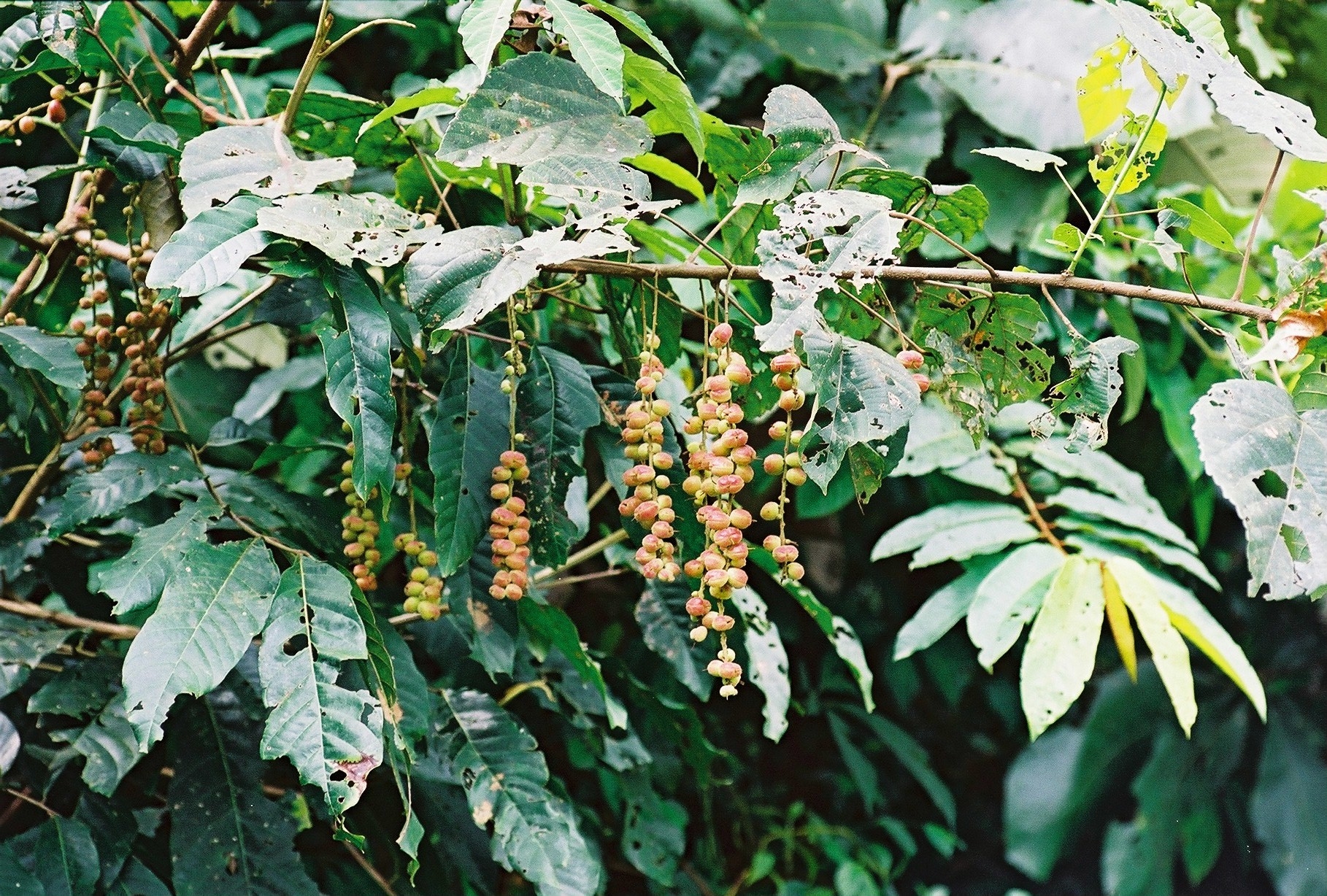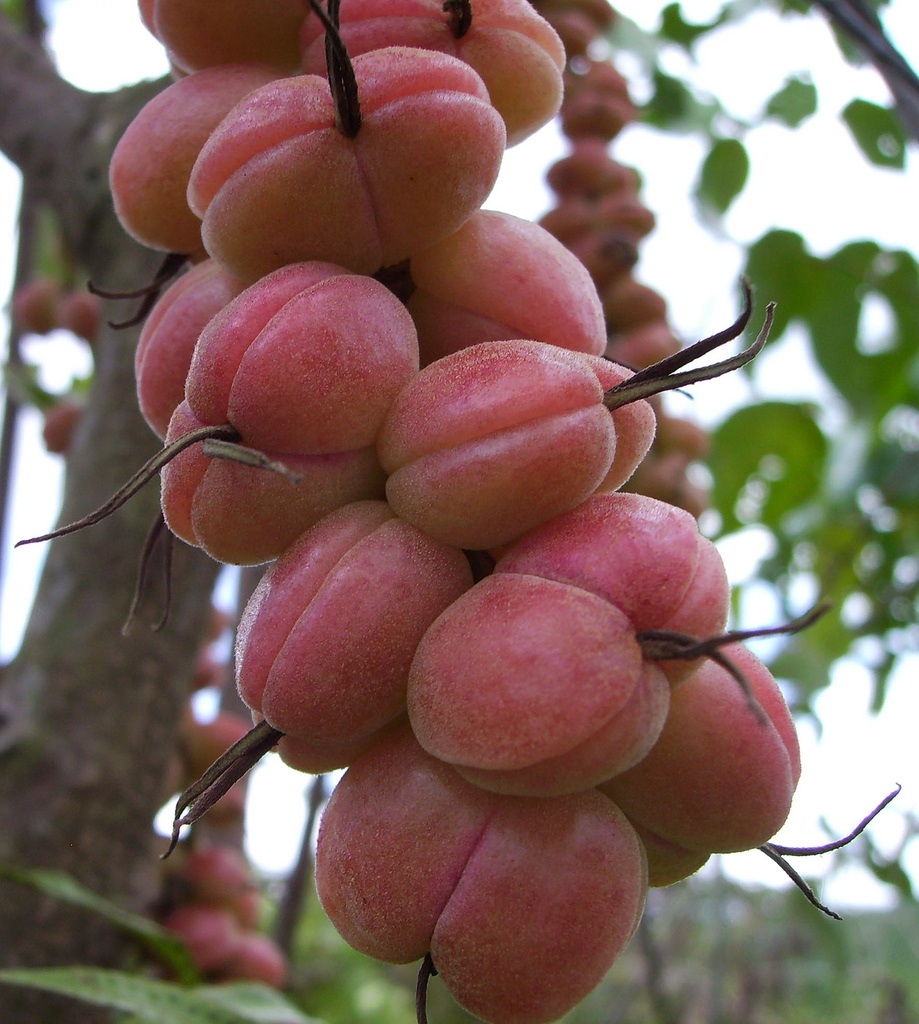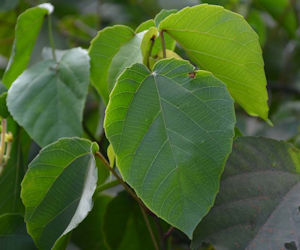Alchornea cordifolia (Schumach. & Thonn.)
| Botanical Name | Alchornea cordifolia (Schumach. & Thonn.) |
| Order: | Malpighiales |
| Family: | Euphorbiaceae |
| Genus: | Alchornea |
| Species: | A. cordifolia |
| Common Names: | English: Christmas bush, French: Abre de djeman, Alchormea cordifome |
Plant Synonyms
Alchornea cordata benth. Schousboe
Plant Local Names
Burkina Faso: Dioula – kho sira; ko yira, Fulfulde – lahedi
Cote d’Ivoire: Boula –Agni, Akya – N’dzin, Malinke – Koyira
Ghana: Akan – ogyamma, Fante – egymma, Ga – adangbe
Mali: Bambara – Ko gira, Malinke – kogira, Peulh – holate, Bulora
Nigeria: Hausa- Baene, Bambami, Igbo – Ububo, Yoruba – Ewa ipa, Esinyin
Senegal: Wolof – Lah, Diola – purger yene, Serer ardana, Yira
Sierra Leon: Madingo – yisai, Mende – njekoi
Togo: Ewa – avovio, Ouatchi – avovia
Plant Habitat
A cordifolia is widely distributed throughout all countries of the West Africa region and across tropical Africa, in secondary forest usually near water, moist marshy places.
Plant Material of Interest
Leaf, Stem bark, root and fruit
Plant Description
A cordifolia is a small tree or many stemmed, almost climbing shrub up to 5-8 m high, stem armed with blunt spines; leaves long-petiolate; broadly ovate, cordate et base, apex shortly acuminate, entire or slightly dentate margin, stellate- puberulous or slightly glaberescent beneath, glands in exils on basal nerves; flowers greenish- white in lax pendulous spikes or receme; styles long and permanent on the fruit; fruit two-called, small, stellate pubescent.
Plant Used Parts
Plant Uses
A cordifolia is commonly used in traditional medicine in Africa in combination with other plants; all plants parts are used. The leaves are used in many Africans countries for the treatment of microbial, inflammatory, and stress- related diseases (Neuwinger, 2000). The leaf decoction is taken for stomachache in cote d’Ivoire and Burkina Faso, while a combination of the sterm bark and the bark of Symphonia lobulifaera is used as an appetizer (Kerharo and Bouquet (Abbiw, 1990), the roots are used against leprosy Abbiw, 1990) and the leaf powder has wound and ulcer cicatrisation properties (Kerharo and Bouquet, (1950). In Mali and Cote d’Ivoire the plant is used to tret malaria (Mustofa et al., 2000).
Plant Therapeutic Action
Antimalarial, antidiarrheal, anti- inflammatory, antimicrobial, febrifuge, analgesic, vunerary, antitussive, antiinfective, antispasmodic
Plant Precaution for Use
Pregnancy, hypotension
Plant Adverse Effect
May cause gastrointestinal disturbance at high doses
Plant Contraindication
Liver dysfunctions
Plant Dosage Forms
Decoction: 30-50 g of dried leaves per one litre of water. 3-4 teacups daily
Infusion: 20-30 g of dried leaves per one litre of water 3-4 teacups daily
Tincture; 1:5, 45% ethnol; 5ml three times daily.
Plant Dosage
Decoction, tincture, infusion
Plant Storage
Store in a cold dry place.
Plant Chromatographic Fingerprint
Analytical TLC on solica gel G60 F254, 0.25mm layer in petroleum ether (40-60 cy?/chloroform [2:8] detection in daylight, after spraying with anisaldehyde (0.5 ml) mixed with 10 ml glacia acetic acid, 85 ml methanol and 5 ml concentrated sulphuric acid and heated to 100-110 ? for 5- 10 min. presence of four characteristic spots with R,s 0.82 (brown), 0.54 (blue), 0.47 (pink) and o.40 (pink).
Plant Constituents
Alkaloids (eg. Alchomine and related alkaloids tannins, flavonoids and proanthocyanidins (Bennnet, 1950; Paris, 1958; Pruja, 1987; Ogundipe et al., 2001; Ayisi and Nyadedzor 2003; Kouakou-Siransy et al., 2010) Candinol, caryophylene, linalcool and (E-) a-bergamotene (Okoye et al. 2011).
Plant References
Abbiew D.K. (1990). Useful Plants of Ghana, Royal botanique garde, Kew edition, 126-247.
Agbor, G. A., Leopold, T., Ngoggang, Y.J. (2004). The antidiarrhoea activity of Alchormea cordifollia leaf extract. Phytotherapy Research 18:873-876.
Agbe, S.A.O., Oguntimein, B. (1987). Anti-Trypanocidal activity of Alchormea cordifolia Phytoterpy research 1:151-153.
Ayisi, N.K., Nyadedezor, C. (2003). Comparative in vitro effects of AZT and extracts of Ocimum gratissium, Ficus polita, Clausena anisata, Alchornea cordifolia, and Elaeophorbia drupifera against HIV-2 infections. Antiviral Research 58:25-33.
Bonnzouzi, J.T., Prado, R., Menen, H., Valentine, A., Roumestan, C. et al. (2002). In vitro antiplasmodial activity of extracts of Alchornea cordifolia and identification of an active constituent ellagic acid. Journal of ethnopharmacology 81:393-401
Barry, M. S., Uulale, K., Camara, N. Vuetinck. A. J. et al (2002). Evaluation de I’activite antifongique de plantes a usage populaire en Guinee, Poster lors du symposium international sur la chimie et la phamarcolgie des plantes utilises en medicine traditinelle en Afrique, 6-8 mars Bamabaka Mali.
Bonnet, H. (1950). Alchornea cordifolia leaves and bark from Nigeria. Colonial plant annual Products 1:132-134.
Ebi, G C. (2000). Antimicrobial activities of Alchornea cordifolia. Fitoterapia 72:69-72.
Elakim-Ikechukwu, C.F., Obri, A.I (2009). Histological changes in the pancreas following the administration of ethanolic extract of Alchornea cordifolia leaf in alloxan-induced diabetic Wister rats. Nigeria Journal of Physiological Science 24(2):152-155.


